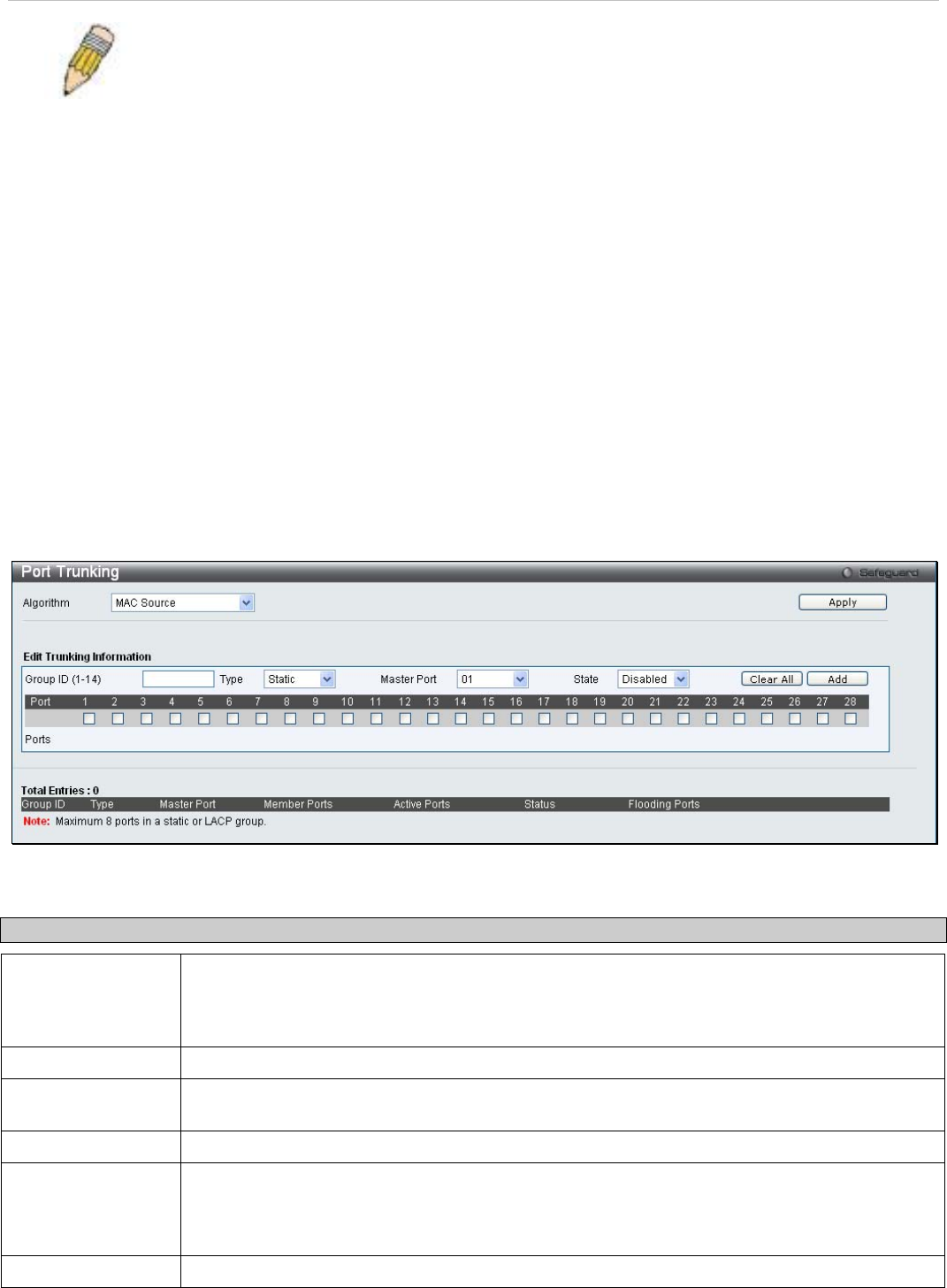
xStack
®
DES-3200-10/18/28/28F Layer 2 Ethernet Managed Switch User Manual
NOTE: If any ports within the trunk group become disconnected, packets intended for the
disconnected port will be load shared among the other unlinked ports of the link aggregation
group.
Link aggregation allows several ports to be grouped together and to act as a single link. This gives a bandwidth that is
a multiple of a single link's bandwidth.
Link aggregation is most commonly used to link a bandwidth intensive network device or devices, such as a server, to
the backbone of a network.
The Switch allows the creation of up to fourteen link aggregation groups, each group consisting of two to eight links
(ports). All of the ports in the group must be members of the same VLAN, and their STP status, static multicast, traffic
control; traffic segmentation and 802.1p default priority configurations must be identical. Port locking, port mirroring
and 802.1X must not be enabled on the trunk group. Further, the aggregated links must all be of the same speed and
should be configured as full duplex.
The Master Port of the group is to be configured by the user, and all configuration options, including the VLAN
configuration that can be applied to the Master Port, are applied to the entire link aggregation group.
Load balancing is automatically applied to the ports in the aggregated group, and a link failure within the group causes
the network traffic to be directed to the remaining links in the group.
The Spanning Tree Protocol will treat a link aggregation group as a single link, on the switch level. On the port level,
the STP will use the port parameters of the Master Port in the calculation of port cost and in determining the state of
the link aggregation group. If two redundant link aggregation groups are configured on the Switch, STP will block one
entire group; in the same way STP will block a single port that has a redundant link.
To view this window, click L2 Features > Port Trunking:
Figure 3 - 21. Port Trunking window
The following fields can be set
Parameter Description
Algorithm
The algorithm that the Switch uses to balance the load across the ports that make up the port
trunk group is defined by this definition. Choose MAC Source, MAC Destination, MAC Source
Dest, IP Source, IP Destination or IP Source Dest (See the Link Aggregation section of this
manual).
Group ID (1-14)
Select an ID number for the group, between 1 and 14.
Type
This pull-down menu allows you to select between Static and LACP (Link Aggregation Control
Protocol). LACP allows for the automatic detection of links in a Port Trunking Group.
Master Port
Choose the Master Port for the trunk group using the pull-down menu.
State
Trunk groups can be toggled between Enabled and Disabled. This is used to turn a port
trunking group on or off. This is useful for diagnostics, to quickly isolate a bandwidth intensive
network device or to have an absolute backup aggregation group that is not under automatic
control.
Active Ports
Shows the ports that are currently forwarding packets.
75


















